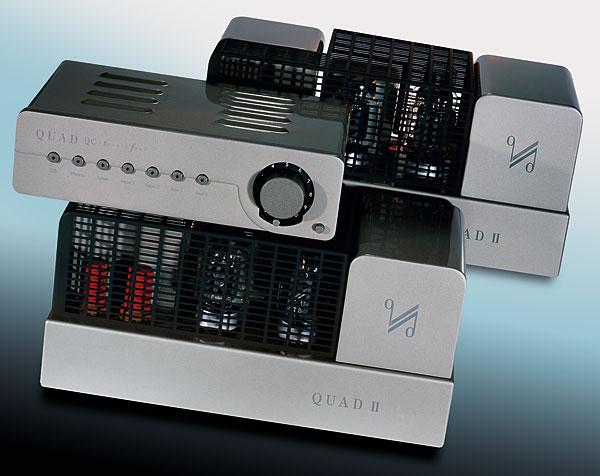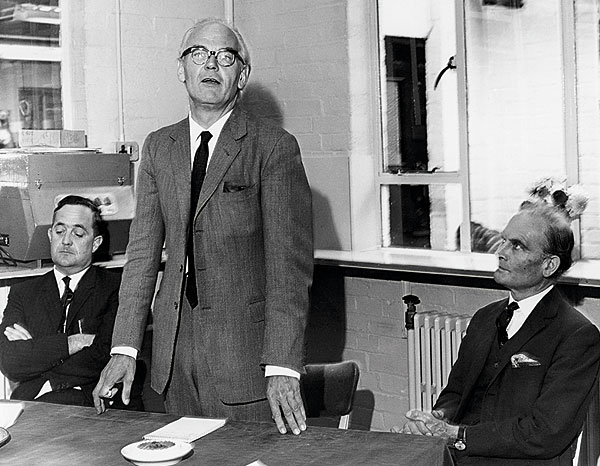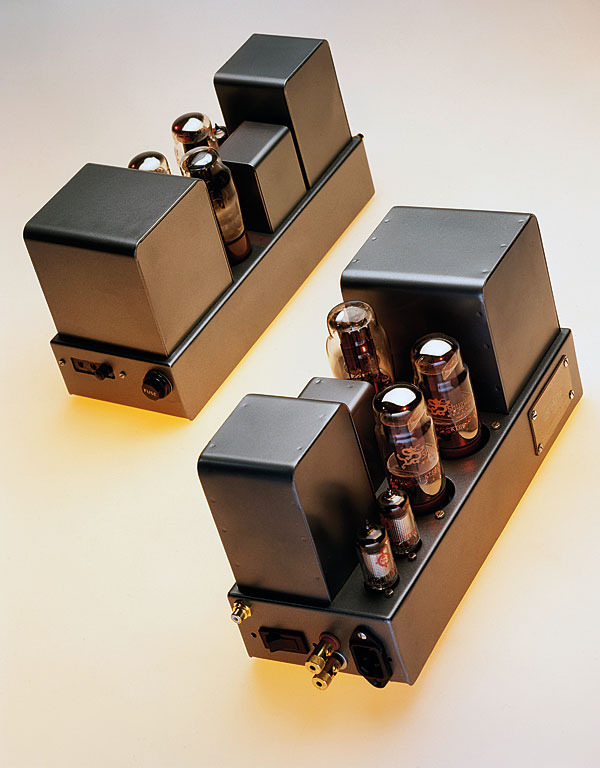Quad Valves Reinvented!

 Ken Kessler brings you an exclusive subjective review of a legend reborn: the Quad ll-forty mono power amplifiers and QC-twentyfour preamp
Ken Kessler brings you an exclusive subjective review of a legend reborn: the Quad ll-forty mono power amplifiers and QC-twentyfour preamp
Goodness me! Two Quad scoops in one season! OK, so it's not like waking up with Kim Basinger, but I am fully aware of the privilege. When I kicked off the Quad 989 loudspeaker review [HFN Jul '00]
I said that no other product launch since the Quad ESL-63 carried as much baggage as a new Quad speaker. But I almost forgot that for many enthusiasts, it's the Quad amplifiers rather than the company's speakers which matter most.
Even if you agree that the original ESL was/is the Greatest Hi-Fi Component Of All Time there are those who can convincingly argue that the original Quad 22/II pre/power package did as much to mark the company as one of England's finest as did the legendary speaker.

The 22/II pairing is categorically one of the finest amplifier packages to issue from a British maker during the 1950s/'60s. Moreover, Quad sold more pairs of Quad IIs than it did pairs of the original ESLs. But let's be honest; although the ESL overshadows the amplifiers for most observers, it's an historical milestone because it had no competition. The Quads have a permanent place in the tube amp pantheon, up there with the Dynaco Stereo 70 and the various Leaks, and an updated version is something that the faithful have awaited for far too long.
Maven Voyage
Initiated by Stan Curtis, now reviving Lecson, the Quad Tube Project was conceived from the outset not to be an exercise in mere retro; it had to be a valid amp in Y2K terms, while working perfectly with the 989. Curtis hired Andy Grove, known for his work with Audio Note and in all probability the hottest young tube-maven in the UK. His brief was to create the modern equivalents of the Quad 22 and Quad II, with Peter Walker's circuit used as a starting point. While retaining a topological link to the originals, the company wanted to address the most important difference between old and new, and that's modern-day power requirements.
Clearly, the 15W of the old power amplifier would not suffice, even for the Quad 989 speaker for which the ll-forty was designed. Thus, while staying with two output tubes as in the original design, KT66s were changed for KT88s in the Quad ll-forty. The result is a deceptively powerful amplifier, though its probable rating is only 40W. There's every reason to believe this specification is conservative; for a brace of KT88s is usually expected to deliver 50W.

Those who know vintage valve gear will be quick to remind you that the old Quad valve amps were run near to the components' limits, and so the company wanted to avoid replicating the older amps' fragility. To this end they added 'a more robust power supply' using a 5U4G rectifier valve, while the input valves are now 6SH7S instead of the original EF86s. Accompanying the tube change is a new chassis that retains the earlier layout and styling, but which has been increased in size to 387x178mm in order to house the larger components.
On the Quad ll-forty, the musical note logo and the name are present on one of the long sides, while the other side, evidently the back, contains an on/off rocker switch, gilded terminals for 4 or 8ohm speakers, a gold-plated phono input and an IEC three-pin mains input. Meanwhile, the new amps wear robust tube cages, finished in black to contrast with the lovely champagne finish instead of the battleship grey of yore.
Sea Change
So, too, is the QC-twentyfour related to the old Quad II preamp in concept and appearance. However, simplicity and minimalism have dominated amplifier design for the past 20 years, so gone are many of the quirky niceties that were necessities in the 1950s: multi-position filters, phono settings, direct connection for the AC source to the power amps and so on. As such, the unit offers only input switching for seven sources via relays activated by press buttons which light up to indicate status; a rotary volume control; on/off button; and a sliding balance control beneath the volume knob.

This is a sea change in Quad philosophy. Forget all about those funky little multi-pin canisters which plugged into the back to vary the sensitivity for, say, a Ferrograph 'tape head' or a Collaro 'pick-up', nor is there a printed plastic card with record label EQ settings for you to misplace. Quad has employed copious amounts of hardwiring and hand-soldering, with an overall build quality which, frankly, makes the older models an embarrassment. It's like comparing an MG-F with an MG-B.Quad also opted for tubes which should provide long life, estimating over 6000 hours for the KT88s, while the 6SH7S should enjoy a span of 15,000 hours; the lone 6111WA double-triode used in the QC24 is a special military valve with a lifetime of 60,000 to 100,000 hours.
There were no operational restrictions to speak of, other than a request to keep cable lengths down to 10ft or less. I had already enjoyed fantastic Quad-run demos with the new valve electronics driving a pair of 989s and the disappearing act made by the speakers in the factory demo room was nothing short of astonishing. So I fed the QC-twentyfour/II-forty duo into both original ESL speakers and '63s. All that really accomplished was confirmation of the amp's suitability for Huntingdon-made electrostatics, while showing that the brand-new combination is audibly cleaner and quieter than the grandparents.
Oddball Loads
With the Quad system inserted between a Krell KPS25SC CD player – the finest digital front-end I've used – I tried LS3/5As (magical) and MartinLogan's small hybrids, settling on Wilson Audio's WATT Puppy 6 as the final determinant. Comparisons were made with Quad II valve amps (but not the Quad II preamp, which I find too noisy by modern standards), Radford SC22/Radford STA15 and MA15, the McIntosh MC275 reissue and the Krell FPB 300. Eh? 40W vs 300W? Laugh not: the Quad ll-forty is astonishingly powerful in subjective terms and fully able to handle oddball loads. It drove the WATT Puppy 6 system to truly uncomfortable levels, with the volume barely past the 9 o'clock point.


















































